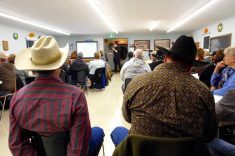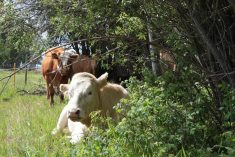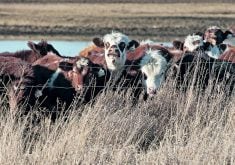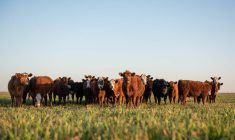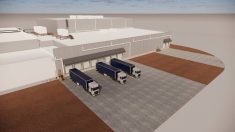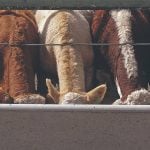Most uterine prolapses are uneventful for an experienced veterinarian, and the owner ends up with a lively cow that breeds again without missing a beat.
Producers will often ship these cows, but any veterinarian will tell you this isn’t a heritable trait and should not reoccur. If the cow rebreeds, there is no greater likelihood it will prolapse again.
Uterine prolapses seem to increase in harder calvings and when cows get positioned with their back ends pointing downhill. The pull of gravity may help the uterus push out the back. If the animal is left quiet or caught ever so gently in a maternity pen, treatment results are usually favourable.
Read Also
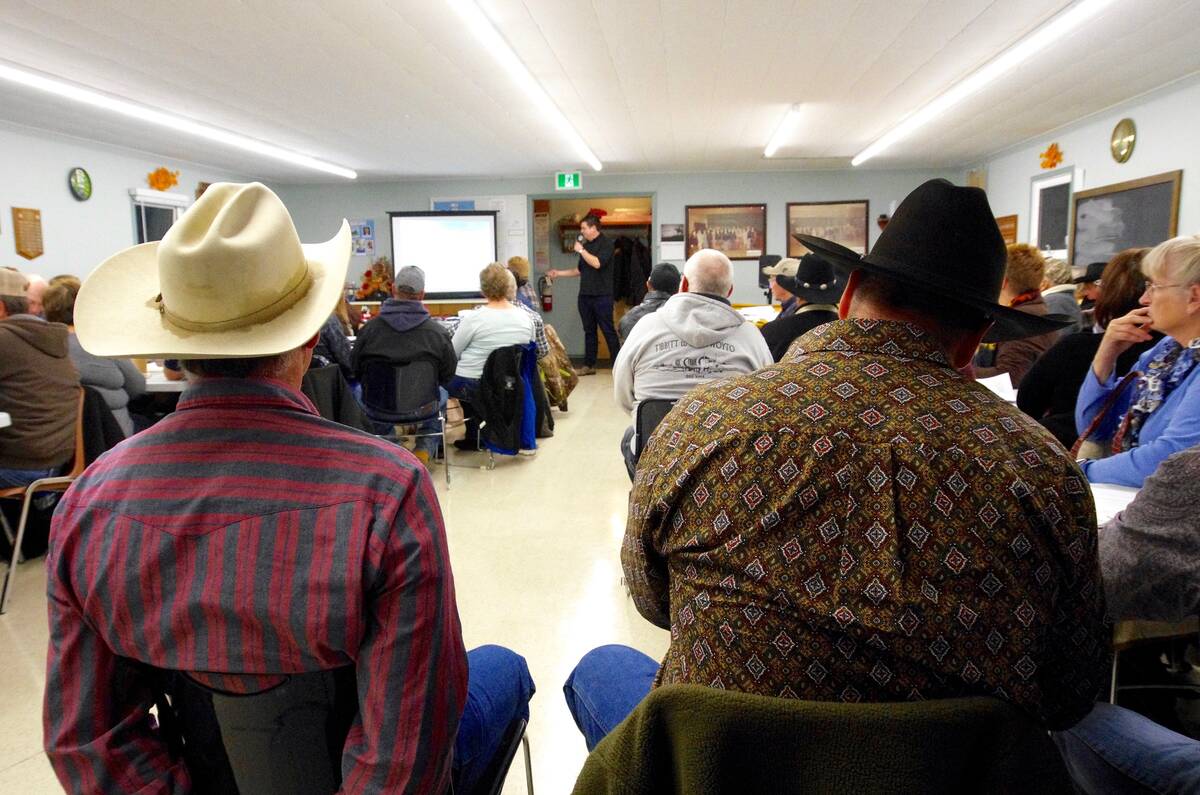
Don’t blow off that beef producer meeting
Local veterinarians and livestock experts often speak at producer events, sharing good advice for farmers on vaccines, calving, herd management and more.
However, it is sometimes a much more serious situation, with severe tearing, ripping and bleeding. Sometimes cows continue to push and rip the prolapse stitches.
Sometimes the veterinarian faces the choice of saving the cow and calf, but eliminating the cow’s reproductive ability. We still lose some animals, but the success rate has risen by doing complete uterine amputations.
Most amputations are done when the uterus is badly ripped or abraded and we are concerned about external or internal blood loss. Most deaths occur when the large uterine arteries rupture internally, causing a huge amount of blood to accumulate in the abdomen.
That is why many uterine amputations are done as a life-saving procedure. Veterinarians will first check to see if any small intestines have gotten inside the uterus before starting the amputation. Various procedures can be used. Some go in internally through an incision and ligate vessels close to the ovaries. Others use elastic rubber i.v. tubing or umbilical tape or huge zap straps to basically tourniquet the uterine stump.
It is then amputated and the stump automatically falls inside the vagina so there is no need for a purse string suture on the outside. As long as there has not been too much blood loss and the tourniquet holds, the cow should recover, although it cannot be kept for breeding.
On one occasion I was called to preg check a cow that a client had bought as a cow-calf pair, and it took some head-scratching to determine its uterus had been amputated. We often see freemartin heifers without a uterus when preg checking but I was not expecting it in this cow. But, she raised the calf and there was a healthy live cow in the fall to sell as well.
The only time I will amputate a healthy uterus is in a cow that continues to push and rip sutures despite having a long-acting epidural (spinal block).
The local veterinarian who mentored me often spoke of a crazy cow that caught her uterus in a bush, ripped it off, kept running and never looked back. This is possible, but rare. I’ve worked on one uterus that was holding on by a thread. I amputated the rest and that cow survived.
If you see a prolapse that appears smooth, without the many red cotyledons, it is likely the uterus presented right side out, not inside out. It is coming out most likely from a tear in the vagina and is a much more serious situation.
This will involve careful examination by the veterinarian to make sure other vital structures like the bladder are not involved. The uterus may be replaced and the tear sutured or in some cases a uterine amputation will be performed.
Each case is unique and needs assessment. Uterine amputations are rare but should your veterinarian advise one, don’t think all is lost. A common treatment would be NSAIDs or steroids prescribed by your veterinarian to counteract shock.
Uterine amputation is a lifesaving procedure that could probably be explained over the phone to an experienced producer if veterinary care was inaccessable. If no treatment can be given, emergency slaughter may be contemplated, but again, a discussion with a veterinarian is needed.
A prolapsed uterus will occur once every several hundred calvings and a badly damaged and torn uterus is a low percentage of that. It is not a situation we run into every day, but be prepared.
Here’s to a trouble free calving season for everyone.




